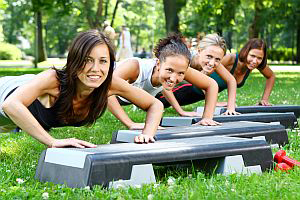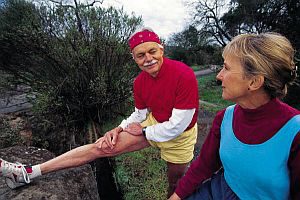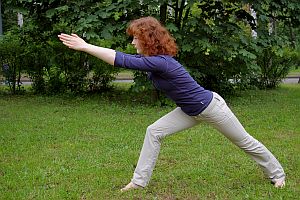Fitness Standards for Adults: Here’s What They’re Good For
President John F. Kennedy once said, “Physical fitness is not only one of the most important keys to a healthy body, it is the basis of dynamic and creative intellectual activity.” Since July 16, 1955, the American government has shown at least a political interest in the health of Americans. Under President Eisenhower, the President’s Council on Youth Fitness established a beachhead against the lagging health of American youth compared with citizens of other countries. Military officers in World War 2 complained that their recruits were out of shape. Perhaps Eisenhower’s program was meant to help reverse that condition. However, it wasn’t until President Kennedy that the Commander-in-Chief took an active role in promoting standards and committing resources to them.
After nearly 60 years, the presidential council has expanded its role in a number of directions, including sports, nutrition and—most relevant to this article—adult fitness. The president’s council has had an established standard for nominal health since 2008 and benchmarks have been created for regular, moderate and vigorous activity. In addition, the council has established an online Adult Fitness Test that allows you to compare your scores with those of fellow Americans. The test can be found at http://www.adultfitnesstest.org/dataEntry.aspx.
The areas tested include the following:
- Aerobic fitness—Preparing for the test, you should work up to moderate exercise (e.g. brisk walking) for 30 minutes, 5+ days per week; and vigorous exercise (e.g. running) for 20–30 minutes, 3–4 days per week.
- Muscular strength and endurance—3+ days per week, work up to 3 sets each of 25 half sit-ups and 10–20 push-ups. Between each set, include a short rest.
- Flexibility—Static stretches should be taken to the point of tension, but never to pain. Hold each for 10–30 seconds. Repeat 1–2 additional times.
- Body composition—Your body mass index (BMI) is a measure of height related to weight, with your waist measurement as a health indicator. This should be kept between 18.5–24.9. BMI calculators can be found online.
These sorts of tests can do a lot to raise public awareness and to help focus people on activities that will make a difference. But they will only be effective is they’re used the right way. And using them the right way starts with understanding what these tests are actually measuring and what the results mean. In some ways, measuring your performance in specific exercises relative to a national average may be less helpful than measuring your improvement over time and setting new goals based on your own progress.
When taking on any exercise program or fitness testing, especially when you have not engaged in rigorous physical activity regularly for several years, you should consult with a doctor or physical trainer. Proper preparation, good technique and consistency are the keys to staying healthy and avoiding injury. Regular chiropractic care can also play an important role in helping to speed recovery, prevent future injuries and improve performance. As musculoskeletal system specialists, chiropractors have unique insight into how patients can safely increase their strength, stamina, flexibility and balance. If you want to learn more, just call or visit our office! You can reach us at Oblander Chiropractic at 406-652-3553.

 It’s no secret that some jobs are just more physically demanding and more dangerous than others. Some of the most challenging ones are obvious—combat roles in the military, fire and rescue, heavy construction and deep sea fishing are just a few that come to mind. However, when it comes to non-fatal musculoskeletal injuries, the statistics tell a very different story about occupational health and safety and about who’s most likely to get hurt on the job.
It’s no secret that some jobs are just more physically demanding and more dangerous than others. Some of the most challenging ones are obvious—combat roles in the military, fire and rescue, heavy construction and deep sea fishing are just a few that come to mind. However, when it comes to non-fatal musculoskeletal injuries, the statistics tell a very different story about occupational health and safety and about who’s most likely to get hurt on the job. Studies have shown that one of the best ways to stick to your fitness regime is to have a reliable fitness partner. Being a fitness buddy means that someone else is counting on you to make them accountable for their workout, keep them inspired and ensure that they are not alone in their quest for fitness. To be a great fitness buddy you just need to keep a few basic guidelines in mind:
Studies have shown that one of the best ways to stick to your fitness regime is to have a reliable fitness partner. Being a fitness buddy means that someone else is counting on you to make them accountable for their workout, keep them inspired and ensure that they are not alone in their quest for fitness. To be a great fitness buddy you just need to keep a few basic guidelines in mind: If you are middle-aged (40-60, by some definitions) or older, here’s 15-second self-test for you. Do you often find yourself needing to sit down or steady yourself against a table when putting on your shoes or stepping into pants? Do you increasingly need to use the armrests of your chair to “push off” when getting up? Do you generally hold on to handrails whenever you go up and down stairs? If you stand with your feet close together, do you feel unsteady and unable to balance yourself properly?
If you are middle-aged (40-60, by some definitions) or older, here’s 15-second self-test for you. Do you often find yourself needing to sit down or steady yourself against a table when putting on your shoes or stepping into pants? Do you increasingly need to use the armrests of your chair to “push off” when getting up? Do you generally hold on to handrails whenever you go up and down stairs? If you stand with your feet close together, do you feel unsteady and unable to balance yourself properly?